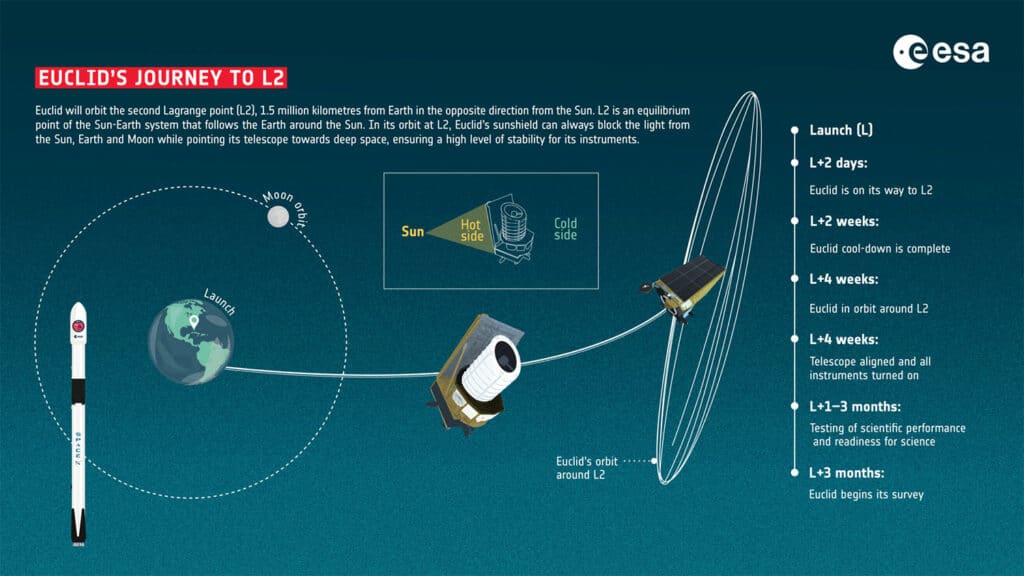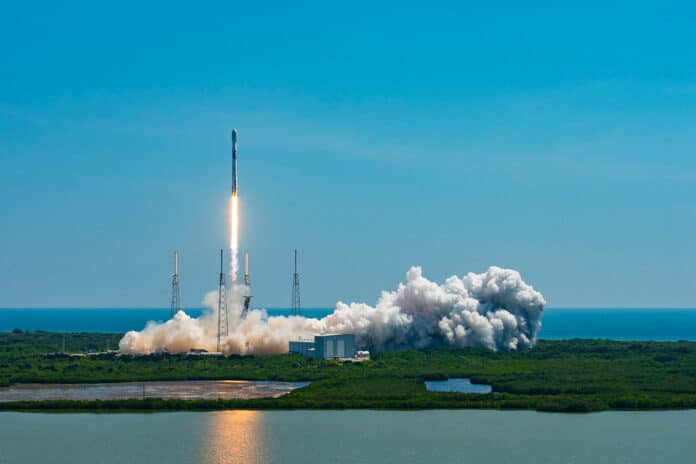The European Space Agency’s Euclid spacecraft lifted off on a SpaceX Falcon 9 rocket from Cape Canaveral Space Force Station in Florida on Saturday, July 1. The successful launch marks the beginning of an ambitious mission to study the so-called “dark universe” and learn more about mysterious components of the cosmos, namely dark matter and dark energy.
The Euclid spacecraft contains a 1.2-m (3.9-ft) reflecting telescope that can view the universe in visible and near-infrared light. The telescope feeds the two innovative scientific instruments: the VISible-wavelength camera (VIS) and NASA’s Near-Infrared Spectrometer and Photometer (NISP).
The VIS is designed to take very sharp images of galaxies over a large fraction of the sky, while NISP can analyze galaxies’ infrared light by wavelength to accurately establish their distance.
The enormous amount of data collected by these instruments will be sent back to ESA’s European Space Operations Centre (ESOC) in Darmstadt, Germany, by the space agency’s recently upgraded Estrack network of deep space radio antennas. These data will be analyzed by the Euclid Consortium – a group of more than 2000 scientists from more than 300 institutes across Europe, the US, Canada, and Japan.
All these collected data will be used to create the largest and most detailed three-dimensional map of galaxies stretching across 10 billion light-years. This detailed chart of the shape, position, and movement of galaxies will reveal how matter is distributed across immense distances and how the expansion of the universe has evolved over cosmic history, enabling astronomers to infer the properties of dark energy and dark matter. These two mysterious components make up about 27% and 68% of the universe, respectively, but astronomers do not know what they are.

In the next four weeks, Euclid will travel towards Sun-Earth Lagrange point 2, an equilibrium point of the Sun-Earth system located 1.5 million km from Earth, where the gravitational pull of the Sun and the Earth balance one another out. There, Euclid will be maneuvered into orbit around this point, and mission controllers will start the activities to verify all the functions of the spacecraft, check out the telescope, and finally turn on the scientific instruments.
Engineers will then be engaged in an intense two-month phase of testing, calibrating Euclid’s scientific instruments, and preparing for routine observations. Over six years, Euclid will survey one-third of the sky with unprecedented accuracy and sensitivity.
“The successful launch of Euclid marks the beginning of a new scientific endeavor to help us answer one of the most compelling questions of modern science,” says ESA Director General Josef Aschbacher. “Euclid has been made possible by ESA’s leadership, the effort and expertise of hundreds of European industrial and scientific institutions, and through collaboration with international partners. The quest to answer fundamental questions about our cosmos is what makes us human. And, often, it is what drives the progress of science and the development of powerful, far-reaching new technologies. ESA is committed to expanding Europe’s ambitions and successes in space for future generations.”
